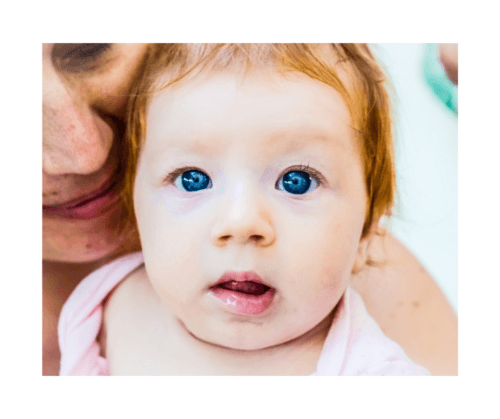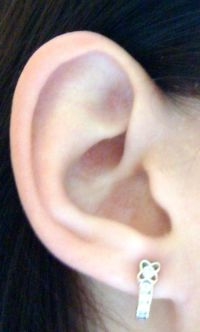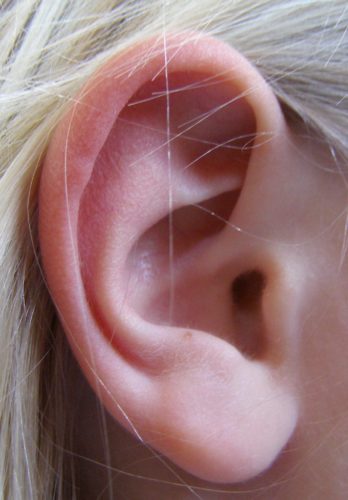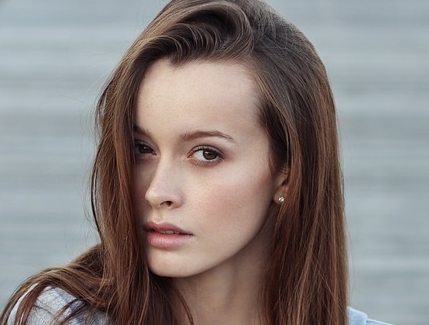How To Get A Cleft Chin Naturally
Predicting what your baby will look like isn't that tough with a little bit of information about mom and dad.
Try it out by making selections in Experienced Mommy's Baby Predictor and click "See Results"!
If you have questions about the choices or how things are calculated, read on and feel free to comment.
Genetics Accuracy
For nearly all traits, the Experienced Mommy's Baby Predictor outputs several possibilities along with how likely each one may be. You may be wondering why we can't tell you exactly what traits your baby will have. There are two main reasons for this.
First of all, despite what you learned about Mendelian genetic inheritance in high school biology, very few traits are determined by only a single gene. Most traits, also called phenotypes, are polygenic traits. Even simple characteristics, like eye color, can have dozens of different genes that play a role. This makes it very complicated to make exact predictions, since we would have to know both parents' gene variants for all of these different genes.
The second reason is that many traits are influenced by both genes and the environment. For example, while your DNA plays a role in determining how tall you will grow, this can also differ depending on other factors such as nutrition. For that reason, we can't know for sure how tall someone will be just based on their genes alone.
Certain populations related by ethnicity, ancestory or geographic location also tend to share common genetic characteristics. Because of commonly shared genetics a population may have a greater or lesser tendency toward a particular trait than the typical average.
Despite the uncertainty, there is extensive statistical data that makes it possible to suggest probabilities. For example, if both parents have blue eyes, your baby is very likely to have blue eyes as well, so the calculator gives a 99% chance of this. However, it's still possible that your baby will not have blue eyes! Our calculator can tell you what's likely to happen, but not what's certain to happen.
Baby Eye Color Calculator
What Color Will My Baby's Eyes Be?
It's hard to be certain! Scientists used to think that eye color was controlled by a single gene that controlled the production of melanin. Melanin is the pigment that determines your eye color: people with more melanin have brown eyes, while people with less melanin have blue or green eyes. However, we now know that at least 10 different genes are involved in melanin production, making it nearly impossible to predict a baby's eye color based on their parents. That's why the Experienced Mommy's Baby Predictor tells you the probability of each eye color; no one can be 100% sure.

Which parent determines the eye color of baby?
The genes that control eye color are not located on a sex chromosome, so both parents contribute equally to the baby's eye color.
What eye color is dominant?
It's a common misconception that brown eyes are dominant to blue and green eyes. In reality, it's much more complicated! Because eye color is controlled by multiple genes, no color is truly dominant over the rest.
What is the rarest eye color?
Green! It's estimated that only 2% of the world's population has naturally green eyes. Outside of the "normal" eye colors, there are also rarer colors caused by genetic conditions such as albinism.
Can brown-eyed parents have a blue-eyed baby?
Yes! Because eye color is controlled by several different genes, it is entirely possible (though unlikely) for brown-eyed parents to have a blue-eyed baby. Conversely, blue-eyed parents can also have a brown-eyed baby.
Are all babies born with grey eyes?
Not always: babies of African or Asian descent are often born with dark eyes. However, it's true that many Caucasian babies are born with blue or grey eyes that darken over time. This is because melanocytes, the cells that produce pigment in your eyes, are activated by light. When a newborn is exposed to light for the first time at birth, their melanocytes start producing a dark pigment called melanin, which takes several months to build up. Your baby's eyes should reach their final color by the time he or she is six to nine months old.
What is the most attractive eye color?
According to one study, blue-eyed men tend to find blue-eyed women more attractive, while brown-eyed men have no preference. Women also seem to have no eye color preference.
What is the cause of amber colored eyes?
Amber irises have a low amount of melanin and a comparatively high level of lipochrome.
How rare are purple eyes?
Back in 2005, there was an internet myth about mysterious, pale-skinned people with purple eyes. This has been thoroughly debunked. There is no documented proof of a person with naturally purple eyes. Even actress Elizabeth Taylor, whose beautiful violet eyes were admired by many, actually had dark blue eyes that were made to look purple by her makeup and clothing.
Is is true that everyone really has brown eyes?
Technically, yes! Everyone's iris (the colored area surrounding the pupil) is some shade of brown, depending on how much melanin you have (darker brown means more melanin). However, if you have less melanin, an optical illusion called the Tyndall effect causes your eyes to appear blue or green. This is similar to why the sky appears blue!
Why are hazel eyes so hard to predict?
You may have noticed that our Baby Predictor is less certain of your baby's eye color when either parent has hazel eyes. This is because hazel is intermediate between green eyes and brown eyes. As a result, a person with hazel eyes has some gene variants that increase the chance of brown eyes, and other gene variants that increase the chance of green or blue eyes. Since any of these variants are equally likely to be passed down, a parent with hazel eyes can have a baby with a variety of possible eye colors.
Do black or grey eyes exist?
Eyes that appear black are actually very dark brown due to expressing high levels of the pigment melanin. This is common among people from eastern Asia.
In contrast, grey eyes appear to be distinct from other colors. Like blue eyes, grey eyes have very little melanin, causing them to appear light in color. However, grey-eyed people have more of a protein called collagen in their eyes. This changes the way that light reflects from their eyes, resulting in a grey appearance. Grey eyes are fairly rare, but have been observed in people from Northern and Eastern Europe.
Relationship of Eye Color to Personality
There have been extensive studies performed on the relationship between iris color and personality traits (another here). For example, one study showed that Caucasian women with light-colored eyes, blue and green, tolerate pain better than Caucasian women with darker colored eyes.
What Color Hair Will My Baby Have?
What color will my baby's hair be?
Hair color is impossible to predict with certainty because it's controlled by dozens, or possibly even hundreds, of different genes. If both parents have blonde hair, then your baby is more likely to also be blonde, but it's also possible that he or she could have dark hair.
What determines hair color?
Just like eye and skin color, hair color is determined by a pigment called melanin. Most people's hair contains a form of melanin called eumelanin, which is dark brown in color. People with lots of eumelanin have black or brown hair, while people with less melanin have blonde hair.
Many different genes play a role in determining how much melanin your hair will contain. If you're a redhead, your hair contains an entirely different kind of melanin called pheomelanin. Most redheads have a mutant form of a gene called MCR1. As a result, two redheaded parents are very likely (though not certain) to have children with red hair as well.
Is brown or blonde hair dominant?
Hair color is controlled by many different genes, so no color is truly dominant.
Do babies' hair change color?
It's fairly common for babies' hair to change color or texture as they grow. According to one study of 232 white European children, hair color tends to darken in the first few months of life, then grow lighter during the toddler years, and then darken to its final shade by the age of 5.
Which parent does the hair gene come from?
The genes controlling hair color and texture are contributed equally by both parents.
Is curly hair a dominant trait?
Just like hair color, hair color is controlled by multiple different genes. As a result, neither curly hair nor straight hair is dominant.
Can parents with straight hair have a child with curly hair?
Yes! While straight-haired parents are more likely to have a straight-haired baby, it's also entirely possible for their baby to be born with curly hair. Similarly, two parents with curly hair can have a straight-haired baby.
What makes your hair curly?
Hair texture is determined by how your hair follicles are shaped. Round follicles produce straight hair, while more oval-shaped follicles produce wavy or curly hair. It's kind of like dragging a pair of scissors along a ribbon to make it curl: an oval-shaped follicle puts pressure on the growing hair and makes it curly!
What is the difference between curly hair and wavy hair?
If your hair follicles are only slightly oval-shaped, your hair will be under less pressure and thus will be wavy. But if your follicles have a more extreme oval shape, your hair will turn out more curly.
What are the different hair types?
Celebrity hairstylist Andre Walker came up with the curl type classification system. This system groups hair texture into four different types: Type 1 (straight), Type 2 (wavy), Type 3 (curly), and Type 4 (kinky).
You can find a baby hairbrush for all types of hair with our guide here at Experienced Mommy.
What Skin Color Will My Baby Have?
Skin color is another genetically complicated phenotype. The relative lightness and darkness of skin color is related to the quantity of melanin polymer secreted into the skin. This means that generally speaking that babies end up with a shade of skin color that represents the mix of genes inherited maternally and paternally.
Although the skin color can't be predicted exactly, a blend of the parent's skin tones is the most likely result. However, there are many examples of bi-racial couples having children with very different skin color from each other.
Skin appearance and function is also affected by a single gene, melanocortin 1 which regulates freckling and sun sensitivity. It is believed that melanin levels adapted to increase vitamin D production in areas of low ultraviolet light and increase skin protection in high ultraviolet light intensity areas such as the Sahara desert.
Will Baby's Skin Get Darker After Birth?
Yes. At birth skin is often purple which changes to red as baby begins to breathe oxygen. The redness tends to go away in the first day. Yellowish skin in newborns may be caused by jaundice which occurs in half of all baby births. Although jaundice is common, it may need to be treated if it persists or is severe.
After birth melanocyte skin cells increase their production of the pigment melanin and skin can get darker. Skin color reaches its "normal" tone by 6 months. But skin color never stops changing entirely.
Can a white person have a black baby or a black person have a white baby?
Yes. Because skin color is influenced by genes passed along from mom and dad, recessive genes in both parents may result in a baby with skin color that is quite different than their parents. However, this is quite rare. One unique case is the Dean twins. One girl is dark the other light and their parents are Caucasian and African American.
Some people believe that ear color is sometimes an indication of a baby's future skin color. Often the tops of a baby's ears are a darker color. The baby's final skin color may end up being the same as the tops of their ears when they were infants. We are not aware that this observation has been studied scientifically.
What is Albinism?
Albinism is a congenital disorder characterized low levels of the melanin pigment and resulting in light skin, hair and eye color and frequently, visual impairment. Parents of any race can have children affected by albinism. In fact, sub-Saharan Africans have the highest current incidence of albinism.
Variation in Skin Color of Africans
Scientists have noted extreme variations in the color of skin across ethnicities on the African continent. A University of Pennsylvania study found that a series of specific genes that influence melanin and eumelanin production.
Earlobe Prediction
Will my baby's earlobes be attached or free?
Maybe you're catching on to a trend by now. Like nearly every physical trait, earlobe shape is controlled by several different genes, so it's impossible to predict with absolute certainty. In fact, many people have earlobes that are somewhere in between attached and free. Two parents with attached earlobes are more likely to have a baby with attached earlobes, and vice versa, but nothing is certain.

Which earlobe shape is dominant?
Earlobe shape is controlled by at least 49 different genes, so neither shape is dominant.
What are earlobes for?
It's possible that earlobes might help to keep the ears warm by increasing their blood supply. But it's generally accepted that earlobes have no biological function. Did you know that people with slightly uneven earlobes are rated as better leaders?

Widows Peak: Will My Baby Have One?
What is a widow's peak?
A widow's peak is a V-shaped point at the center of your hairline.

Will my baby have a widow's peak?
Very little research has been done on the genetics of widow's peaks, so it's tricky to make predictions. It's probably controlled by several different genes, so while two parents with a widow's peak will be more likely to have a baby with a widow's peak too, it's also possible that the baby could have a perfectly straight hairline.
Cleft Chin: Will My Baby Have One?
What is a cleft chin?

A cleft chin (also called a "chin dimple") has puckered skin at its midline, while people with a smooth chin have no pucker. In fact, many people lie somewhere on a spectrum between a fully smooth or cleft chin.
Will my baby have a cleft chin?
Currently, there's not much research about how to predict a cleft chin. However, one small study from the 1960s reported that two cleft-chinned parents have a 91% chance of having a baby with a cleft chin, suggesting that it's strongly influenced by genetics. So it's likely (though not certain) that your baby's chin will look like yours!
Are cleft chins dominant?
Cleft chins are probably controlled by several different genes, so neither chin shape is fully dominant. However, cleft chins do seem to be at least partially dominant over smooth chins.
Dimples: Will My Baby Have Dimples?
What are dimples?
Dimples are small indentations on the cheeks. They often appear when you're smiling.

Will my baby have dimples?
There's very little research about whether dimples are inherited. In fact, many babies are born with dimples that later fade away as the baby fat in their cheeks disappears. Babies can also be born without dimples and develop them later in life. That being said, dimples do tend to run in families, so if both parents have dimples, there's a good chance that your baby will too!
About Dominant and Inherited Traits
What do you inherit from your parents?
Every cell in your body contains 23 unique chromosomes. Each chromosome has 2 copies, bringing the total to 46. One copy of every chromosome is inherited from your mother, and the other copy is inherited from your father. Since egg and sperm cells have only one copy of each chromosome, they have a random chance of receiving the maternal or paternal version of each one, which is then passed down to your baby.
Do you get more DNA from your mother or father?
You inherit about half of your genes from each parent. However, there is a special type of DNA that comes only from your mother: mitochondrial DNA. Mitochondria, famously called the "powerhouse of the cell," are in charge of energy production, and they have their own DNA that's completely separate from the rest of your genes. All of a baby's mitochondria come from the egg cell, so as a result, all your mitochondrial DNA is from your mother.
What are inherited traits?
Inherited traits are influenced by your DNA, and as a result, they can be passed down from parents to children. Some traits are fully inherited, including certain kinds of genetic diseases. However, nearly all traits are partially inherited and partially influenced by the environment. For example, while your genes play a major role in determining your height, it can also be influenced by outside factors such as nutrition.
What are dominant and recessive traits?
A dominant trait only requires one copy to be visible, while recessive traits require two copies. Let's look at lactose intolerance as an example. People with lactose intolerance experience digestive problems when they consume dairy. Lactose intolerance is a recessive trait, meaning that you need to inherit this trait from both of your parents in order to experience it. In contrast, polydactyly (having extra fingers or toes) is a dominant trait. You only need to inherit a copy from one of your parents in order to have polydactyly.
How To Get A Cleft Chin Naturally
Source: https://www.experiencedmommy.com/baby-calculator-predictor/
Posted by: craverthoused1955.blogspot.com

0 Response to "How To Get A Cleft Chin Naturally"
Post a Comment